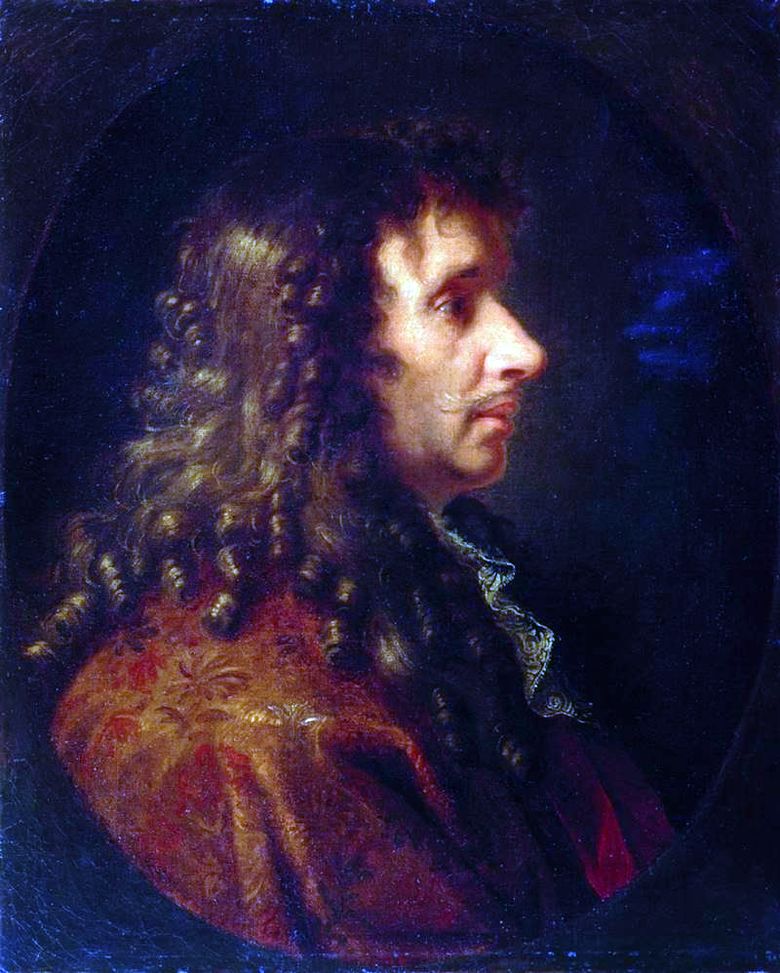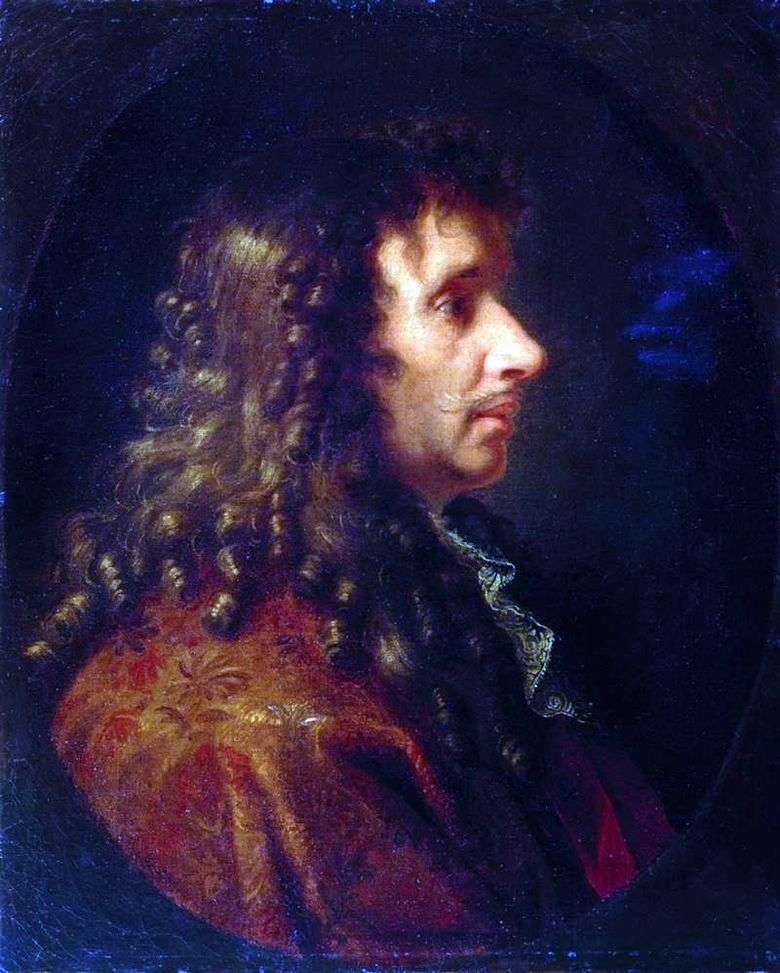
The most specific historical documents of the era are always portraits. They convey to us in all visible authenticity not only the individually unique appearance of the model, but also the ideals of a generation, they retain the features of great people of the past, rulers of the thoughts of their time.
Executed by Charles Lebrun, the first painter of the king, head of the French Academy of Arts, the ideologist of court art, “Portrait of Moliere” is not typical of his work. His pictorial solution is simple and noble.
The profile composition gives the image a harsh detachment and isolation of the character not of a comedian, but of a wise thinker. The soft picturesqueness and partiality of color enhances the spirituality, emphasizes the significance and individual expressiveness of the face, the features of which melt in the sliding shadows.
The greatest French playwright and actor, the author of brilliant comedies, whipping vices and ignorance, a century later will be depicted by the great French sculptor Jean-Antoine Houdon. The bronze bust of his work adorns the museum exposition. In these two portraits there is a dialogue of two cultures, two centuries in the history of France.
 Portrait de Molière – Charles Lebrun
Portrait de Molière – Charles Lebrun Retrato de Moliere – Charles Le Brun
Retrato de Moliere – Charles Le Brun Portrait of the French ambassador in England, Sir Moretta Charles de Soleil by Hans Holbein
Portrait of the French ambassador in England, Sir Moretta Charles de Soleil by Hans Holbein Portrait of Chancellor Seguier by Charles Lebrun
Portrait of Chancellor Seguier by Charles Lebrun Charles I in three angles by Anthony Van Dyck
Charles I in three angles by Anthony Van Dyck Portrait of DI Buturlina by Alexei Antropov
Portrait of DI Buturlina by Alexei Antropov Equestrian portrait of Charles I by Anthony Van Dyck
Equestrian portrait of Charles I by Anthony Van Dyck Joan of Arc on the coronation of Charles VII by Jean Auguste Dominique Ingres
Joan of Arc on the coronation of Charles VII by Jean Auguste Dominique Ingres